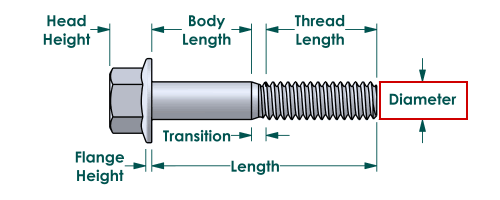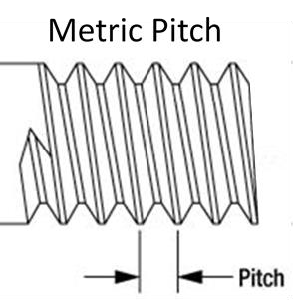Measuring a bolt correctly is an important first step that will save you time in the long run. Making a mistake, due to ordering the wrong size, will cause an unnecessary exchange and delay in your project. BST offers you a tutorial here showing you how to measure your bolts. If you are still in doubt – contact us for technical advice
Recommended Tools :
We have developed a credit card sized gauge that allows for easy measurement of diameter, length, and thread pitch. Type the reference "GABOLT" in the website search bar to view our gauge. It may also be useful to have use vernier callipers
MEASURING A BOLT

The first step in measuring a bolt is knowing what type of head that you require. On our site, you will find a photo in each of our different sections of our various types of heads
Diameter
The diameter of the bolt expressed in mm. For example, a 3mm screw will be displayed M3, 8mm displayed M8
Length
All bolts, except countersunk bolts, are measured under the head to the end of the shaft. For countersunk bolts, the measurement to be taken, is the total length, including the head. For example, M655 or M6x55 would indicate and M6 bolt that is 55mm in length.

Determine the thread pitch
Worldwide, there are a different standards of thread pitch. At BST, we only work with the metric thread pitch which is the most used thread pitch on the planet. The thread pitch corresponds to the size of the thread of your bolt which corresponds to the distance between the threads expressed in mm. A bolt pitch of 1.5 means that the distance between the threads is 1.5mm. In general, the smaller bolt - the finer, or smaller the distance between the threads. Our GABOLT tool also allows the measurement of the length and diameter of the bolt.
